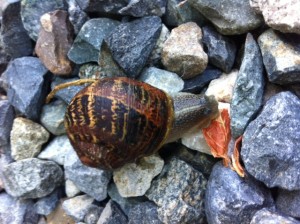Conserving irrigation water in your landscape
August 14, 2012 @ 12:43 pm
August is a good month to review ways to conserve water in the Seattle landscape. Despite our reputation for rain, summers in Seattle can be extremely dry. During summer months, the city of Seattle (and others in growing populations) tiers its water rates, which means the more you use, the more it costs. So there’s incentive to save money by saving water. Here are some ways to conserve water in your landscape:

Evergreen huckleberry. Photo by Ecoyards.
Pick drought-tolerant or low-maintenance plants. Rosemary, oregano, lavender, sage and other herbs are some obvious choices, but they’re certainly not the only ones. Consider beautiful woody shrubs such as viburnum or the strawberry tree, which has glossy green foliage, white flowers and red berries; flowering perennials such as astilbe and penstemon; or edible fruiting plants like the native evergreen huckleberry. Take a tour of the Waterwise Garden at the Bellevue Botanical Garden to check out more ideas. You’ll be amazed at how lush and beautiful a garden can be while still conserving water and reducing the need for fertilizers and chemicals. Now is a good time to start thinking about what you might want to plant in the fall.
Install an efficient sprinkler system. We’ve written before about how a smart sprinkler system can save you time and money. It can prevent sprinkler overspray and other water problems, such watering too much or too little. Ecoyards has been working with customers get water rebates from the city of Seattle by installing smart, water-saving sprinkler systems. Read more about how we helped one customer get $480 in irrigation rebates earlier this year. If you’re not ready for a sprinkler system, or you have a much smaller area that needs watering, consider a drip irrigation system. A drip system saves water because by slowly applying it directly to a plant roots. If you do water by traditional garden hose, try to do so early in the morning or later in the evening to avoid water evaporation. The city of Seattle has a lot of great resources to help you save water.
Filed under Seattle Irrigation Services, Seattle Landscape Maintenance Permalink · No Comments »









